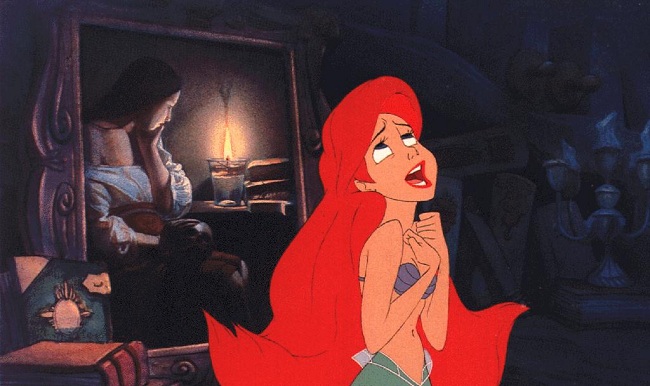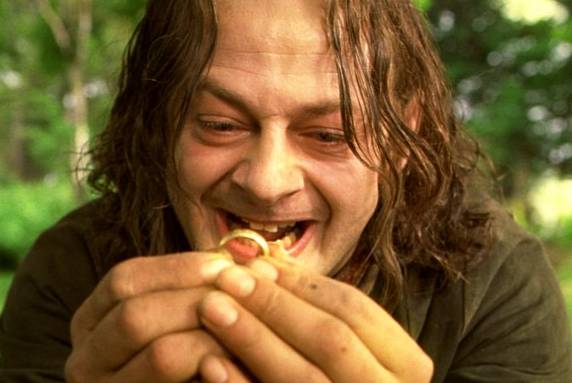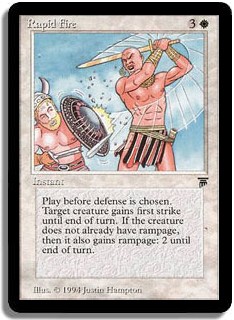What Is a Psychographic?
In the world of marketing, classification is everything.
Let’s pretend that you and I are starting an energy drink business together. We have an effective formula, and the time has come to figure out how we are going to market our product. Should we go for an “extreme” look with bright colors and a jagged logo, or should we stay classy in an attempt to compete with high-end coffee-based drinks? Is it worth it to hire an athlete to endorse our product? Should we advertise online, on TV, or on bus benches?
In order to answer these questions, large companies and marketing firms often turn to demographic data. Demographics are very general and are usually associated with age and gender. For example, the heaviest users of energy drinks are males aged 18 to 30. Market research has shown that males aged 18 to 30 respond positively to endorsements from football players. Thus, hiring a football player to represent our energy drink may help us connect with our most promising audience.
Psychographics are attempts to classify consumers in a more nuanced manner. Instead of assuming that all males aged 18 to 30 respond to advertising in the same way, psychographics look at attitudes, opinions, personality, values, interests, and lifestyles. While demographics classify people by how old they are and what their gender is, psychographics classify people based on how they interact with the product in question.
For example, our (totally made up) market research on energy drinks might show that two types of people consume energy drinks at a much greater rate than the general population. The first group of people is predominantly male, predominantly young, and very active. This consumer likes extreme sports, tattoos, and is generally more socially conscious and community driven than average. He drinks our product because he believes that our energy drinks give him the push he needs to be the fastest and most alert when he needs it most.
The second group is predominantly female, slightly older, and wealthier than average. These women are predominantly career driven and use energy drinks in order to help maintain long corporate hours as well as a rich social life. She drinks our product because she constantly craves something stronger and more immediate than coffee. Without looking into psychographics, we would have likely missed this second consumer entirely.
With a strong knowledge of psychographics, it becomes possible to cater your product directly to your different customers and strengthen your brand. It is not coincidental that all of the best sets have been released in the years since Mark Rosewater developed the three Magic psychographics: Timmy, Johnny, and Spike.
While we tend to shortcut these psychographics to their basest forms—Timmy likes giant creatures, Johnny likes combos, and Spike likes tournament staples—they go much deeper than that. In a nutshell, the psychographics describe why different people choose to play Magic. Timmy plays to experience something incredible. Johnny plays to express himself creatively. Spike plays to prove himself a winner. For more on this, check out Mark Rosewater incredible article on the subject.
In the years since Mark changed Magic design philosophy for the better, we’ve started to see most of the cards that are printed aimed at one or more of these three consumers. In the old days, a bad rare looked kind of like this:
Who is this card for? What does it even do? It’s not going to create any lasting memories, it’s not going to allow me to build a sweet deck around it, and it’s certainly not going to win me any tournaments.
In contrast, here’s a bulk rare from Return to Ravnica:
This is an incredible card. Even though it probably won’t ever see play in a serious Constructed deck, it has a ton of appeal to both Timmy and Johnny. Not only won’t you ever forget the time you won with the Elecutors, but it works perfectly as a “build-around-me” rare for a kitchen table or Commander battle. If a Timmy or Johnny were to pick this up in their first-ever booster pack, they would likely be interested in buying more cards in an attempt to make it work. You certainly couldn’t say that about Rapid Fire, or Blizzard, or any one of a thousand rares from the early days of the game.
Mark Rosewater and the other Magic designers have a specific job: creating Magic cards that are fun and appealing to play. As a trader, you have a similar task: making your trade stock as appealing as possible to as many potential trade partners as possible. In this article, I will attempt to define and explore three different trading psychographics in the hopes of figuring out why different people choose to hit the tables with their binders.
Not only can you use these psychographics to tailor your binder and trading style to each player you come across, but you can also use them as a guide to figuring out when a fair trade isn’t likely to occur. As a trader, your most valuable resource is time. Knowing where your partners are coming from is the easiest way to increase the number of trades you can make in a day and increase your productivity by leaps and bounds.
The idea behind creating psychographics for traders is not a new one for me. It was the subject of the third-ever Magic finance article I wrote, back when I was at Quiet Speculation. Of course, I’ve done a lot of trading since then as well as quite a bit of writing. While the general psychographic descriptions have stayed the same, I have opted to revisit and revise this topic in order to delve into it a little deeper.
Gordon
The 1987 film Wall Street still stands as the definitive portrayal of 1980s corporate finance culture. In the film, Michael Douglas plays Gordon Gekko, a speculator and stockbroker whose unrestrained desire for wealth drives him to do unsavory things. Gordon is ruthless and uncompromising, and his exploits have become symbolic in popular culture as a representation of the “greed is good” mentality.

Gordon trades in order to gain value. He is aware of all of the recent pricing trends, and he has a general idea of which cards are under and overvalued. Gordon values being dispassionate about his collection and loathes making a deal from a position of weakness. If he has to give up value in order to get the last few pieces he needs for a deck before an event or something, that “loss” will likely sting well into the first round of play.
Even though Gordon Gekko is a villain in Wall Street, the Gordon psychographic isn’t necessarily evil. I am a Gordon, and if you’re reading this column, chances are you are too. A successful Gordon pays significantly less than the market value for his or her Magic collection by virtue of making smart trades. While some Gordons are ruthless traders who prey on the innocent, others use speculation and knowledge of new tech and format rotations to buy low and sell high.
Gordon the Shark
Sharks are the most visible and aggressive subtype of Gordon. These are the traders that give us all a bad name. They will not hesitate to get the best deal possible using any means necessary. The most common and profitable shark attack is to use aggression to get a deal across before their partner even knows what has happened. Some sharks act as though you are wasting their time just by talking with them, even though they were the ones who asked you to trade in the first place. Other sharks will give you a toothy smile the entire time, happy to string you along until the last moment when they suddenly pick up the pace.
While a few sharks continue to use the old “what do you value this at?” trick, waiting for you to slip up on a price so that they can double up on some obscure rare before you even know what happened, that trick has fallen out of favor recently. Nowadays, many sharks have graduated to simply telling you “what they can give you” on each of your cards, hoping to use the hurry-up offense to finish a deal before you have time to think.
Sharks are generally not worth dealing with unless you absolutely have to. If you must interact with them, your best line of defense against them is to change the tempo of the trade. Modern sharking is based a lot on forcing people to deal before the cell phones can come out and prices can be checked because at that point the shark will either have to accept a reasonable trade or slink away. If they have a card you need, do not be afraid to slow down the deal and make sure it is one you can live with.
The biggest weakness most sharks have is being short sighted when it comes to value. While I don’t recommend this move for amateurs, it is sometimes possible to beat a shark at their own game simply by allowing them to gain value while you end up with multiple copies of a card on the rise. If you were on the trading floor when Serra Ascendant spiked, for example, chances are you could have gotten some pretty good deals out of an unassuming shark’s giant book while they were too busy making sure you didn’t look up any prices so that they could fleece you out of your Lord of the Undeads.
Gordon the Statistician
If the idea of trying to out-shark a shark sounds awesome to you, chances are you are a statistician. This subtype of Gordon isn’t interested in bullying little kids over their expensive foils—they want to figure out which Standard planeswalker will spike next while simultaneously stocking up on cards that might come off the Legacy banned list one day. Much like the top Standard players are always trying to figure out ways to attack the metagame, statisticians count their wins in terms of spec attempts that pay out.
Statisticians often have spreadsheets, graphs, and opinions on every card announced during spoiler season. To a statistician, a bad beat story is the time they got stuck with a box full of Nivmagus Elementals or Splinterfrights. They scour eBay for deals and calculate profit margins to the dollar. To them, trading is a 24/7 activity, not just something that happens between rounds at FNM.
How can you recognize a statistician on the trade floor? Get them talking about a card or two and see how they respond. A true statistician will start talking about match win percentage and pricing trends and will probably segue it into a story about the time when they got 500 copies of Disrupting Shoal for ten cents each. These guys are difficult to trade with because they always know the latest values, but because they’re so hyper-aware of pricing they rarely try to rip anyone off. They don’t view the trade process as adversarial—they simply want to beat the market.
Furthermore, statisticians also know that they rely on others for the latest spec tips, so they are generally fairly gracious and community minded. If you have the latest card they think will go up, chances are they’ll give you the best deal in the room for it without batting an eye. It’s good to make friends with statisticians because sometimes cashing these cards out for staples represents the best possible chance to sell high.
Jeff
Jeff Lebowski, known to most as “The Dude,” is a man of simple desires. He likes to bowl, drink white Russians, and walk on his rug—it really ties the room together. None of what happened to him in The Big Lebowski was his fault really—he just wanted someone to fairly compensate him for his rug so that he could continue on living his life.

Jeff trades to get cards he has a specific need for. He is generally a Constructed player, and he’s only interested in the cards he has to get in order to finish his latest deck. While he probably wouldn’t turn down a ludicrous trade in his favor, Jeff generally finds the idea of value trading abhorrent because the rise of sharking has made it harder for him to get the spells he needs at a fair price. Jeff generally has a trade binder, but it is likely small and disorganized. He will usually only trade when he has to.
Jeff the Competitive Player
The next time you’re at a PTQ, pay attention to what people are doing near the end of a round. Five to ten percent of people will have binders out and will be trading, usually over on one side of the room. These are mostly Gordons. Everyone else, the guys milling around talking about strategy or eating lunch? Most of them are competitive Jeffs.
Competitive Jeffs care about card value, but only because they’ve had to learn prices over the past few years as value trading became more popular. They tend to have excellent knowledge of one or two formats but very little knowledge of the others. Standard Jeffs tend to respect the value of Eternal cards even if it’s not their thing, but Legacy Jeffs tend to dislike Standard cards. Most competitive Jeffs dislike casual cards altogether and distrust the price of expensive Commander staples—how can a card that sees no actual play be worth so much!?
Competitive Jeffs are generally shortsighted and are fine trading for cards that are inflated in price if they need them for a deck. They tend to be more sentimental than Gordon and will likely keep playsets of cards they’ve done particularly well with or that they think they may need again someday. Most competitive Jeffs hung on to a set of each of the Zendikar fetchlands, and they’ll do the same with Ravnica shocks.
Because competitive Jeffs are decisive and aren’t out for blood, they are my favorite psychographic subcategory to trade with. They tell you what they want at the start, and if you have it they’re always amenable to working out a fair deal. They rarely question trading straight across at whatever book value you establish because they don’t want to put in the effort to see if a card will go up. The easiest things to get from competitive Jeffs are causal cards and staples that have rotated or fallen out of favor. The hardest things to get from them are tier 1 format staples.
When dealing with a Jeff, the best thing you can do is match their decisiveness. Figure out what they want from you and find something comparable in price in their book. Don’t take forever, haggle over a few dollars, or try to offer them more in an attempt to pry away a card they really don’t want to trade—none of those things work on Jeff. If you develop a good enough relationship with them, chances are they’ll come to you next time they need a card. These are great relationships to foster as a trader.
Jeff the Casual Player
The best trades in Magic happen between a casual Jeff and a competitive Jeff. They are mirror images of each other, and neither can figure out why the other one values cards so differently. While a competitive Jeff would never want to be stuck with an unplayable $12 rare like Forge[/author]“]Darksteel [author name="Forge"]Forge[/author], a casual Jeff would be equally baffled that a silly uncommon like Spell Snare could sell for $8.
Casual Jeffs are the reason Mind Funeral and Imperious Perfect are $5 each, so don’t underestimate them—most of the players who only show up for FNM once in a while or simply play their Magic at home or at off-hours are casual Jeffs. There are a lot more of them out there than you think. The biggest difference between a competitive and a casual Jeff is that the latter may or may not know card values at all.
Casual Jeffs often don’t know or care about prices and will occasionally make the sort of trade that would cause Gordon to wake up that night in a cold sweat. If you come across this sort of casual Jeff, I recommend steering them in the right direction in terms of how much their cards are actually worth. By being honest, you will likely gain a valuable trading partner for many weeks to come while continuing to strengthen the community.
While casual Jeffs generally know what they want, they are usually more flexible about it than their competitive counterparts and will happily look through whatever cards you have in search of a potential gem they haven’t yet encountered. They’ll still only trade for a card if they can think of an immediate home for it, but you can go a long way toward finishing a trade with one by asking what they’re building and suggesting any tech that you might have.
Trading with a casual Jeff should be a collaborative project, and these trades often take a long time to complete. Casual Jeffs tend to be very attached to their pet cards, and you should not try to press them to make a deal they do not want to—these players are used to being targeted by sharks, and because of that they are far more mistrustful of traders than their competitive counterparts.
The best way to deal with casual Jeffs is to be patient with them. Lay out the cards on both sides of the table and make sure to look up the latest prices so that they don’t feel as though you are taking advantage of them. Allow them ample time to look at your book and pick out what they want. If you nurture the trade along, chances are you will be able to get a fair deal on the sort of tier 1 tournament staple that a competitive Jeff would never be willing to part with.
Ariel
Ariel, also known as “The Little Mermaid,” was unsatisfied with her lot in life. She had gadgets and gizmos aplenty. She had whozits and whatzits galore. She even had twenty thingamabobs. That wasn’t enough for her, though. She kept growing her collection and yearning for the next shiny bauble that would let her connect with the world above.

Ariel trades for the joy of collecting new things. She either has the largest trade binder in the store or the smallest—sometimes, she’ll keep her main collection at home and just look to trade ten or twelve cards at a time. Either way, if you see a card you like in Ariel’s binder, get it while you can. She trades all the time, so her turnover is quite high. Unlike Jeff, who is motivated by need, Ariel is a very impulsive trader. She won’t know what she wants until she sees it, but when she gets fixated on a card, she absolutely has to have it.
Ariel the Magpie
Got any foils? Ariel the Magpie wants them. In fact, this subtype of Ariel tends to only want foils. Competitive magpies are usually Eternal players—these are the guys and gals with Legacy or Vintage decks filled with Japanese foils. Casual magpies tend to focus on foiling out cubes or Commander decks. Some casual magpies even try to complete foil sets or playsets of each block as it is released.
Foils are one of the most polarizing things in Magic—few players are indifferent to them, and people who love them tend to be obsessed. Magpies aren’t a common psychographic subtype, but if you have a few in your area, you might want to cater a section of your binder just for them. The good thing about trading with Ariels is that they tend to want different cards each week, so a card they passed over last time might be at the top of their list today. Always allow Ariel to take the cards they want out of your binder and touch them before completing the trade. By making the card more tangible, you increase its desirability to Ariel.
Magpies that play competitively are usually willing to trade their non-foil staples at a decent rate. They’re always acquiring better versions of these cards, so the old ones become yesterday’s news. Because the cards that Ariel desires tend to be rare, sometimes you can name your price on what they want. Ariel is generally very emotional about certain cards and dispassionate about the rest of them, so let that dictate the flow of a trade. In general, magpies believe that normal cards can always be reacquired but that this might be their only chance to get that elusive foil. If you get something rare, take it to your local magpie first—they’ll appreciate it.
Ariel the Curator
Curator Ariel believes that Magic cards belong in a museum—specifically, one they create themselves. Curators might not even play Magic anymore, but if they do, it will likely be Vintage, Limited, Cube, or an old casual format you read about in Inquest in 1998 and had long since been forgotten about. Curators are likely older, and they will have been playing for over a decade. Trying to start a complete collection from scratch now is much too difficult. If you ask a curator Ariel about their collection, they will probably go on for hours about the various rarities they’ve gotten over the years for far less than they are worth now.
While magpies are often willing to overpay for foils, curators tend to be more deliberate traders. They take the long view on everything and are generally unwilling to trade for Standard cards at high rates. They are condition sticklers, and you can usually get nicked and dinged cards from them at a steep discount. Trading with a curator is difficult because they generally have their playable rares mixed in with a bunch of irrelevant Mirage uncommons. They might not even have a binder at all. This type of trader is also the most likely to be carrying around vast swaths of their collection that aren’t even for trade.
Playability takes a backseat to rarity for the curator. While magpies generally play with the foils they get, curators usually only have a couple of decks (that were built several years ago) and are now just looking to complete sets. As long as you make the dollar values work and have the esoteric stuff they need, they will happily trade you their fifth copy of Temple Garden for your four or five two-dollar Tempest rares that they’ve been angling to get for months now.
The trick in trading with a curator is to let them go through your cards one at a time and figure out what it is that they want. They generally have a list, but if you have something unexpected, they may jump on it. After that, you will likely have to play the “is it for trade?” lottery for quite a while before finding something decent. In the end, though, they will generally accept any fair deal and allow you to get rid of some weird old cards that no one else would have ever wanted.
Jeff/Gordon
Jeff/Gordon is the NASCAR driver trader who only wants a specific card or two for their deck and needs to gain value in whatever deal they make for them. These traders are very hard to deal with, and once I identify one I generally try to avoid any future trades with them. This psychographic is responsible for most of the failed trades that I end up having to walk away from.
Jeff/Ariel
Jeff/Ariel has a long-term plan. They have a cube, a Commander deck, a Vintage deck, or a shelf of binders filled with playsets of staples. Unlike a regular Ariel, a Jeff/Ariel hybrid isn’t distracted by shiny objects—they have a long list of them and won’t stop trading until they have everything they need.
Gordon/Ariel
Gordon/Ariel has the best trade binder you’ve ever seen. It has a full set of Beta power, thousands of dollars’ worth of foreign foils, and pages of fetchlands. They are perfectly happy to sit around trading for value all day, but their eyes light up whenever they anything truly rare and will sometimes go above and beyond to get it.
Jeff/Gordon/Ariel
This trader’s preferences depend on what sort of mood they’re in. They’ll generally always trade for value and have a few cards they’re willing to spec on, but some weeks they’ll just be looking to trade for whatever they need for a deck. They’re not driven to search out rarities or foils, but when they have the chance to get a card they’ve never seen before, they’ll do it.
Gollum
Gollum’s binder has not changed since the first age of Middle Earth. The front page has the Shivan Dragon he opened in his very first pack. He loves the Shivan. You can’t have the Shivan. He needs the Shivan. He needs the…the…precious.

Trading, precious? We HATES trading. Filthy hobbitses. Nasty, rotten, tricksy hobbitses. Always trying to steal the precious. Always being false. We never trades cards, precious. They are ours. You can’t have them. GOLLUM! GOLLUM!
Gollum isn’t a unique psychographic profile because he isn’t a separate type of trader. Much like in The Lord of the Rings, Gollum used to be something else a long time ago. That Gollum in your local store? He was once a Gordon, or a Jeff, or an Ariel.
Back when he started playing Magic, Gollum ran into a trader who took advantage of him. He made an ill-advised deal that cost him The Precious—a card in his collection that proved difficult or impossible to reacquire. That loss of The Precious haunts him to this day, and that desire not to lose a card like that again keeps him from trading now. This entire aspect of the game has been lost to him forever.
This Week’s Trends
Exquisite Blood is the hottest card out there right now. It is part of an infinite combo in Gatecrash Standard with Vizkopa Guildmage. With Exquisite Blood (whenever an opponent loses life, you gain that much life) in play, you need to activate the Guildmage’s second ability (whenever you gain life this turn, each opponent loses that much life) and find a way to either deal damage or gain life. Doing that isn’t very hard, especially because the Guildmage can give any creature on the board lifelink.
On Twitter, I immediately recommended picking up copies of Exquisite Blood. They were selling here on StarCityGames.com for $1 and disappeared immediately. As of this writing there are still a few copies out there for around $2, but most of them have been relisted in the $4 range. It is worth noting that most of these purchases were made by speculators.
Most of the financial experts online are recommending a quick flip, but I disagree. It’s true that casual cards like Sanguine Bond climbed in value rather slowly and their market developed more naturally, but I’ve always felt that this card would eventually find a home. In my Avacyn Restored set review, I predicted that this card would end up at $5 thanks to casual interest, and the fact that this interaction now exists has only served to spotlight the card. It is already very good in Commander and had an outside shot of seeing tournament play in sideboards even without Vizkopa Guildmage.
If this card were from a widely opened set like Innistrad or Return to Ravnica, I would be recommending a sale as well, but the fact that it is from Avacyn Restored means that the price ceiling is very high. If you went in big, I would sell enough copies now to lock in value, but this is a good bet over the long term as well. There is also the (very) small chance that this combo is good enough for Standard and the card shoots to $15. Otherwise, it will likely fall off to about $2.50 as the speculators unload before starting to creep back up to the $5+ range.
The number of Leyline of Sanctity available online for $5 or less is approaching zero, and the average is up over $9.
Serum Visions is a $3 card thanks to Modern. This card wasn’t worth anything when Modern Masters was developed, so there is a strong possibility that it will not be reprinted this spring.
Thoughtseize is at an all-time high, sold out here on SCG at $50 and averaging $50. I do not think it has much further to grow and would suggest selling any copies you aren’t using.
Cryptic Command is another scorching-hot card right now. It’s sold out at $25 here on SCG, and it isn’t much cheaper anywhere else.
The shocklands are still stable in the $8-$12 range. It doesn’t look like they’re going to fall much further, and now is the time to buy.
Venser, Shaper Savant is retailing in the $20 range. Why? Because it’s from Future Sight, so it can. At this point, I’m a seller.
Reliquary Tower will see print as an FNM foil. Set foils already lost a lot of their value thanks to the M13 reprint, so don’t worry about selling. I would recommend picking up a few of these while they’re being given out, though, as the price on this card will start to creep up a bit over the next year or so.
Until next time–
–Chas Andres


